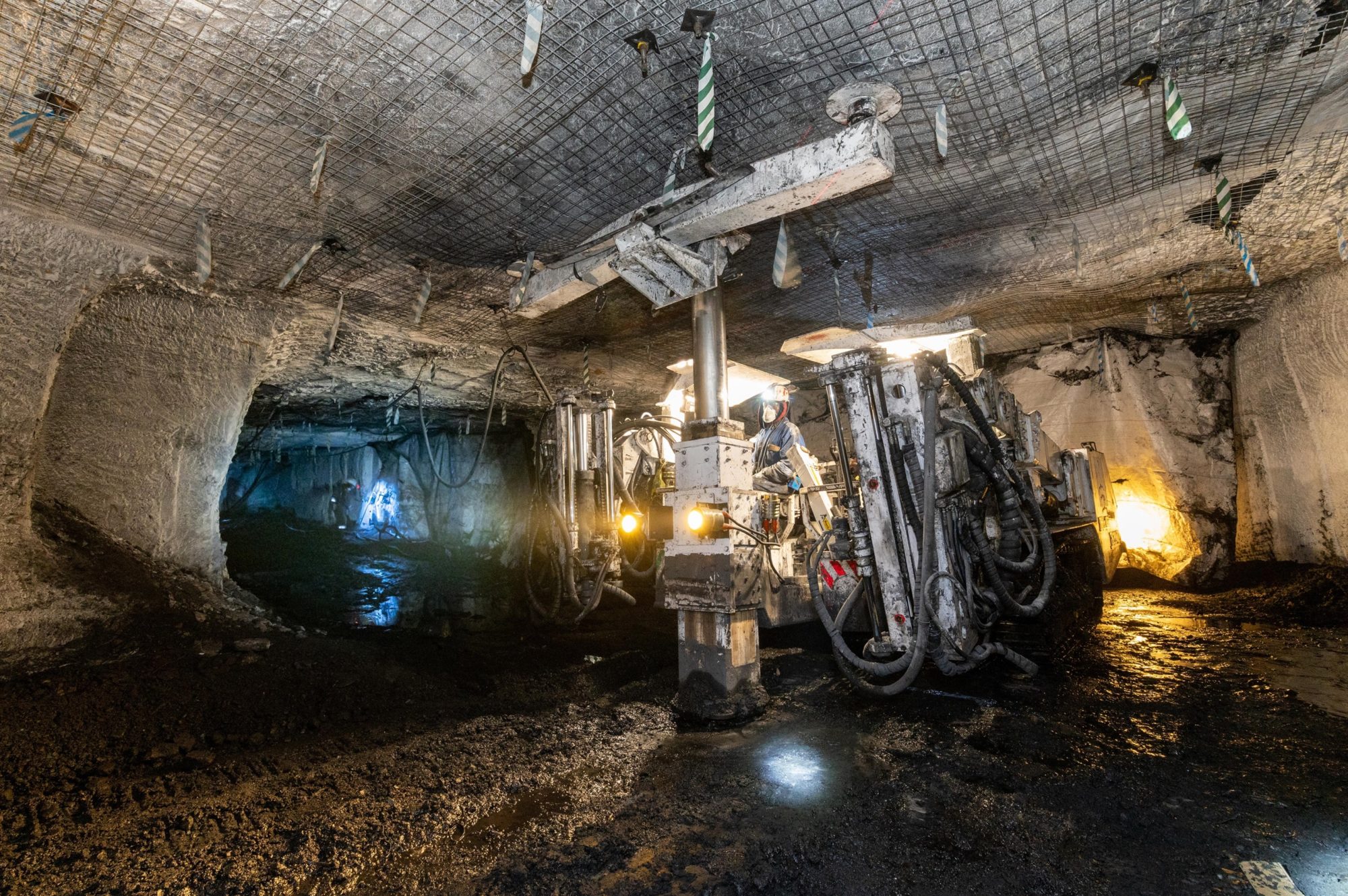Murray & Roberts Cementation continues to add to its order book of business in southern Africa, with the company saying it is engaged in a number of projects in South Africa and having project prospects in nearby countries.
According to Graham Chamberlain, New Business Director at Murray & Roberts Cementation, the busy pipeline of projects demonstrates the mining sector’s faith in the company’s industry knowledge and depth of skills. In southern Africa, the main projects underway are at De Beers’ Venetia Mine, Ivanhoe Mines’ Platreef project and Palabora Mining Company.
At the Venetia Underground project near Musina, work has been ongoing since 2013 in one of the largest investments in South Africa’s diamond industry in decades. Transitioning from open-pit to underground mining will extend the mine’s life until 2046. Murray & Roberts Cementation has been engaged in sinking, lining and equipping of two shafts – the production and service shafts – to a depth of 1,080 m. The company also developed a decline tunnel and is completing associated surface and underground infrastructure, in a project whose scope included raiseboring work to establish ventilation infrastructure.
“In this maturing project, the mine is now getting into ore and starting to develop the infrastructure levels,” Chamberlain says. “At the shaft bottom, good progress continues to be made with the construction of workshops, pumping stations, silos and loading arrangements.”
Murray & Roberts Cementation is also conducting all the infrastructure development at Ivanhoe Mines’ Platreef project near Mokopane. This includes the sinking of a 5.1 m ventilation shaft to meet horizontal development at 950 m below surface. To achieve the high accuracy levels demanded by the project, the raiseboring equipment was guided by directional drilling technology.
“A unique aspect of this project is that the shaft will be hoisting ore at that same time as allowing upcast air to reach surface,” Chamberlain says.
Another vent shaft by Murray & Roberts Cementation – measuring 8.5 m in diameter and reaching a depth of 1,200 m – is nearing completion at Palabora Mining Company near Phalaborwa. Part of the mine’s Lift II expansion, the project has earned an impressive safety record – being fatality free and achieving 574 days without a Lost Time Injury since 2022. Ground conditions were among the reasons why a blind sink was chosen as the optimal method instead of raiseboring, as the side walls needed immediate support to prevent scaling.
“We also have a number of services projects underway related to raiseboring, grout plants and rehabilitation,” Chamberlain explains. “Much of our work in this field is focused on old infrastructure that requires maintenance, repairs or upgrades; we also conduct extensive vertical work in ore passes and silos.”
The company carries out vital rehabilitation in ore passes where ground conditions have deteriorated to prevent ore from moving smoothly – thereby risking production targets. Innovating safer techniques for this work, Murray & Roberts Cementation has developed the tube-and-fill method, first applied about seven years ago at an underground platinum mine in South Africa. These installations are also expected to outlast the lifespan of an ore pass rehabilitated with traditional shotcrete.
“On the engineering front, we continue conducting rebuilds of underground mining equipment at our Bentley Park facility near Carletonville,” Chamberlain says.
He highlights the work of the company’s design department, which remains extremely busy with feasibility studies associated with vertical work. With the renewed interest in commodity segments like copper, there is also previous work that customers are asking Murray & Roberts Cementation to review and update.
Training in underground mining and related skills at the company’s Training Academy on Carletonville continues to empower many thousands of learners each year, Chamberlain points out. This skills development is done on behalf of clients, as well as for the company’s own requirements.
“At any one time, we can host about 420 learners, and we are generally at full capacity,” he says. “We have just recently upgraded these facilities to further enhance training technologies that allows learning to take place safely but in a realistic environment.”
In compliance with many African countries’ localisation regulations, Murray & Roberts Cementation has registered companies in eight countries in the Southern African Development Community – most of which have seen the company active with raiseboring. Chamberlain notes that there are specific opportunities in Zambia that the company hopes to capitalise upon in the near future, and is encouraged by the mining sector’s progress in countries like Namibia and Botswana.











